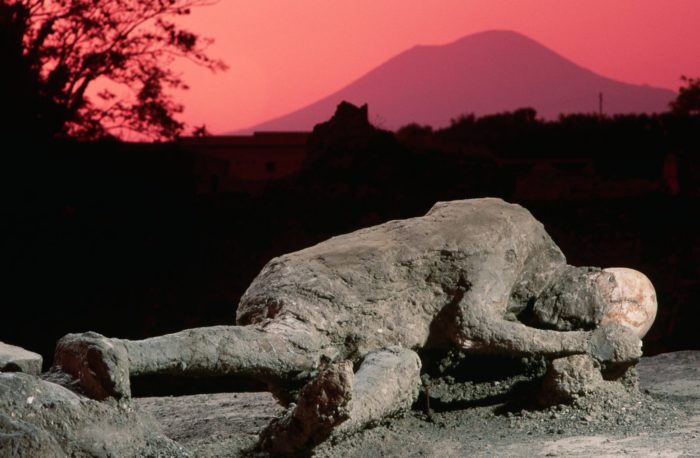Four other troubling curves predated this crisis.
We need to start flattening the curves now.
photo: Roger Ressmeyer/Corbis/VCG/ Getty Images
As I look back at the long bygone era before the coronavirus, I keep being reminded of my visit to Pompeii, whose people were wiped out in the first century by a violent volcanic eruption. There had been many warning signs, including a severe earthquake, tremors, springs and wells that dried up, dogs that ran away and birds that no longer sang. And then the most obvious warning sign: columns of smoke belching out of Mount Vesuvius before the volcano blew its top, burying the city and its inhabitants under sixty feet of ash and volcanic rock. But the warning signs had been dismissed as “not particularly alarming.”
There are plenty of echoes in our modern-day Vesuvius. I don’t just mean the reports and repeated warnings from health officials that the government failed to heed. For years, we have lived with — and largely ignored as “not particularly alarming” — continuous increases in chronic diseases, an accelerating mental health crisis and growing income inequalities — not to mention the escalating climate change crisis. These are our equivalents of tremors and belching smoke. And now, vulnerabilities in our physical and mental health and structural inequalities are disproportionately affecting our ability to slow the spread of the coronavirus.
So here are four curves — in addition to the curve of coronavirus infections — that we need to start flattening now:
1. Chronic Diseases: The pandemic has forced a reckoning around our failure to take action on chronic health conditions like diabetes, hypertension and obesity. According to the Centers for Disease Control and Prevention, six in 10 American adults have a chronic disease and four in 10 have two or more. The key drivers of chronic diseases are lifestyle related, from poor nutrition and tobacco use to lack of physical activity and excessive alcohol use. And part of the food supply that fuels obesity and diabetes is a gruesome factory farming system that creates breeding grounds for antibiotic-resistant bacteria and pathogens leading to human infections. A new study in the Journal of the American Medical Association of thousands of hospitalized coronavirus patients in New York City provides staggering data making the connection between underlying conditions and the severity of coronavirus infections: nearly all patients had at least one chronic condition and 88% had at least two. Only 6% had no chronic health conditions.

